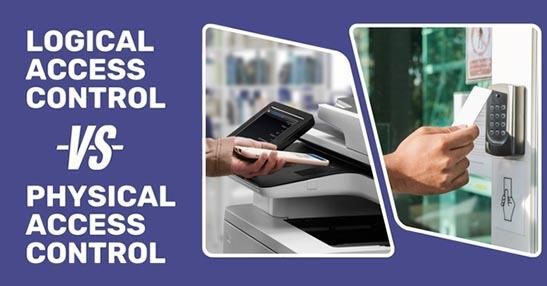Logical Access Control vs. Physical Access Control: What’s the Difference?
Speak With An Expert
Organizations face increasingly sophisticated cybersecurity threats that range from unauthorized data exfiltration to social engineering attacks like phishing. The rising frequency and severity of these threats underscore the need for comprehensive security frameworks.
However, implementing an effective security strategy requires an awareness of the differences between logical access control vs. physical access control. By understanding the unique goals each system aims to accomplish, you can balance physical and logical access controls to achieve higher levels of security for your data, systems and physical workspaces.
Logical access control and physical access control both play an important role in your organization’s cybersecurity strategy. But to ensure comprehensive protection, you have to understand the intended benefits and use cases of each.
Logical access control involves security mechanisms that enable organizations to identify, authenticate and authorize employee access to digital resources like networks, data, systems and applications. Ideally, logical access control should be passwordless to minimize security risks and reduce friction in the user experience. The use of mobile phones and digital wallets in these access control systems provides a convenient, password-free way for employees to access resources they need to do their jobs while offering higher levels of security.
Passwordless logical access control systems can also support multi-factor authentication (MFA) by fulfilling at least two of the three core tenets of MFA: something you have, something you know and something you are. For example, you can enable secure logical access through a mobile device (something you have) that’s protected by biometric authentication (something you are).
Physical access control refers to the systems that enable an organization to control and restrict a user’s access to physical locations such as doors and entryways. Physical access control systems often incorporate biometric authentication and RFID technology to control entry to facilities.
These physical security tools also help protect sensitive areas by ensuring only authorized users can access them. For example, an office door equipped with an RFID reader prevents unauthorized visitors from entering the office, which protects both people and digital infrastructure from security threats.
While physical and logical access control both play crucial roles in the overall security of your organization, logical access control is your most essential defense against cyberthreats. As the digital landscape becomes increasingly complex, there’s a growing need to ensure that only authorized individuals can access sensitive data and systems. Logical access control provides a robust security framework that enables greater accountability and eliminates the need for employees to remember passwords or use shared passcodes.
However, the convergence of physical and logical security highlights the need for a comprehensive security framework. In the interconnected business world, traditional cyberattacks can disrupt physical systems and computers, while physical threats can provide entry points for digital attacks. For example, an attacker might gain unauthorized access to a secure area, then use legitimate employee credentials found there to launch their attack.
With the right technology solutions, you can secure your facilities and data in a streamlined way. rf IDEAS’ WAVE® ID readers enable each user to access resources, workspaces, network systems and devices with a single credential. With support for both mobile and physical credentials, WAVE® ID readers are straightforward to implement across a wide variety of physical and logical access control systems.
The need for robust logical and physical access controls has never been more evident amid the escalating cyberthreat landscape. rf IDEAS’ WAVE® ID readers facilitate seamless logical access control while integrating with physical access control systems. By using a single credential for physical and logical access, you can streamline security and provide employees an intuitive user experience.
Contact us to learn more about how you can achieve comprehensive security.